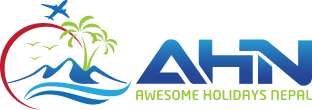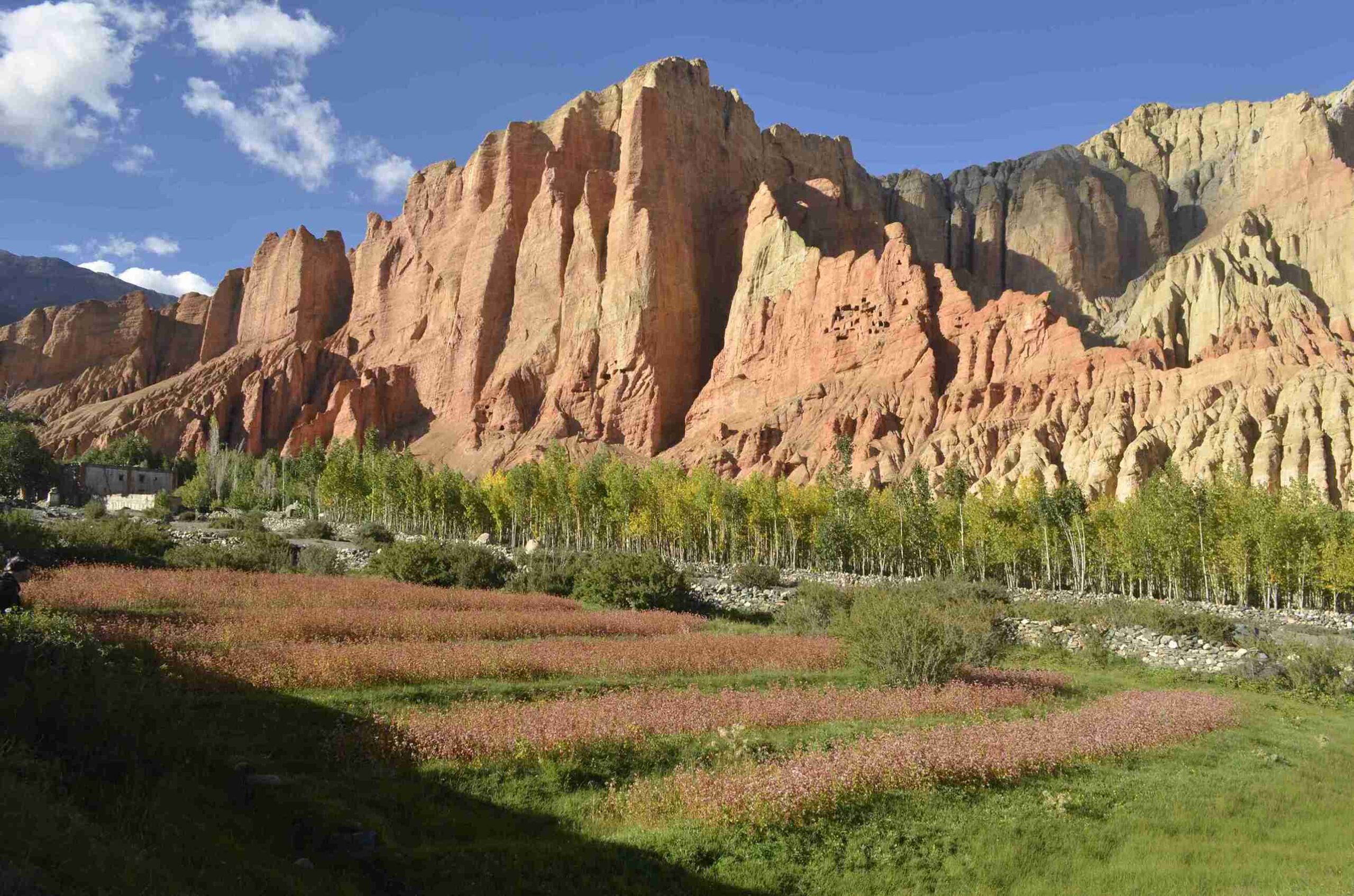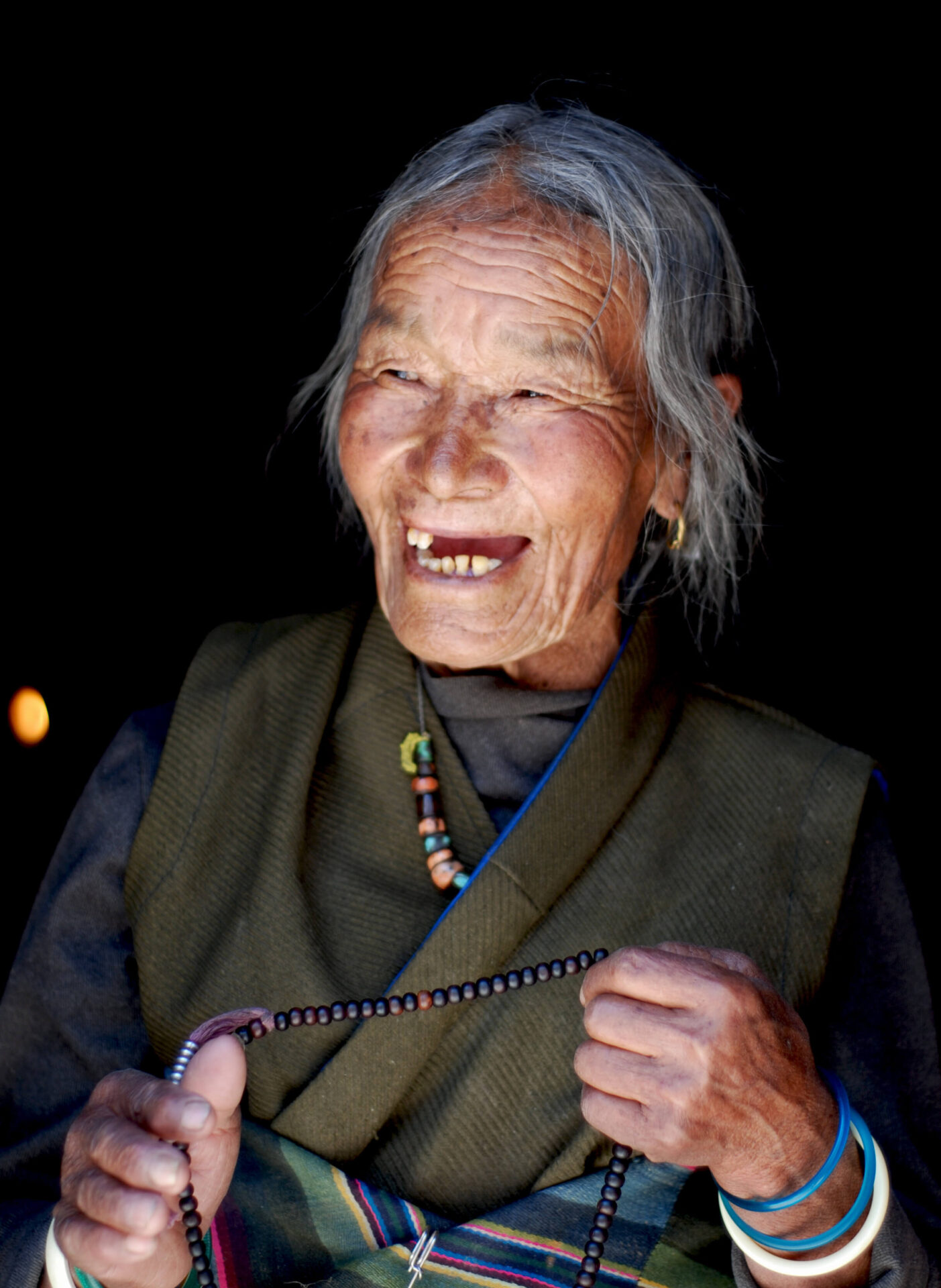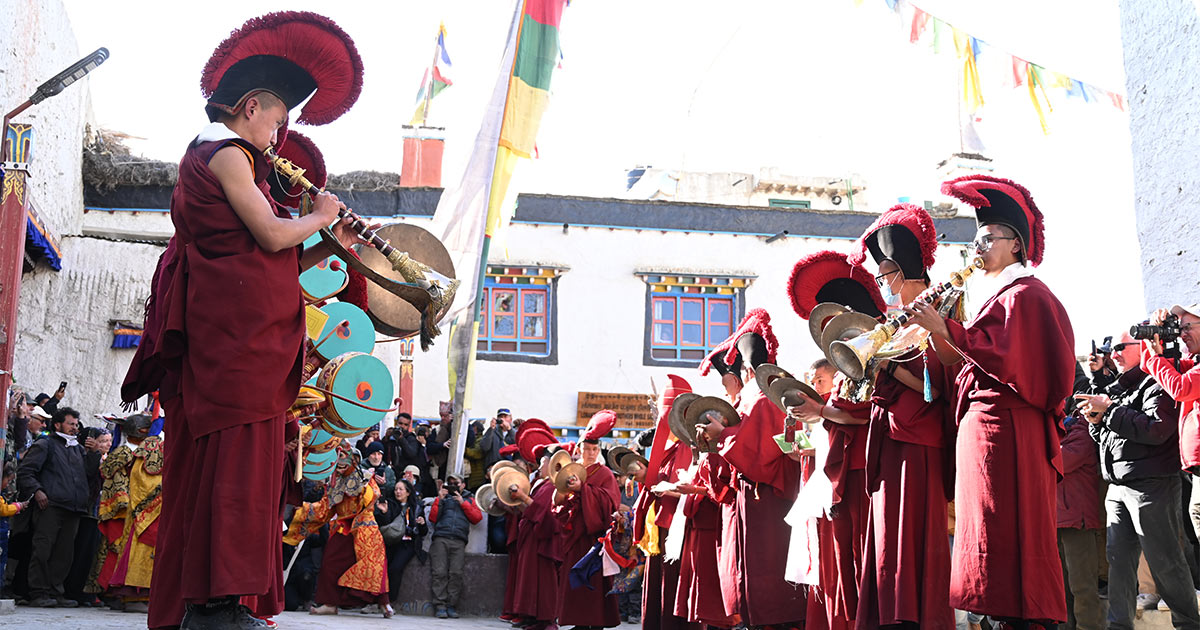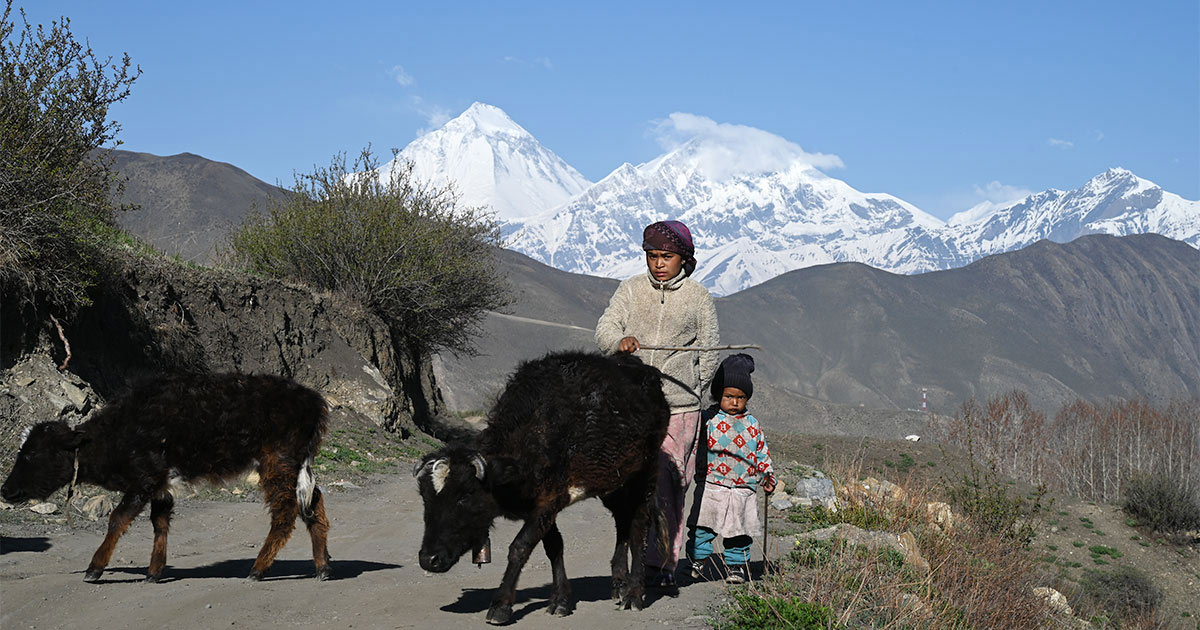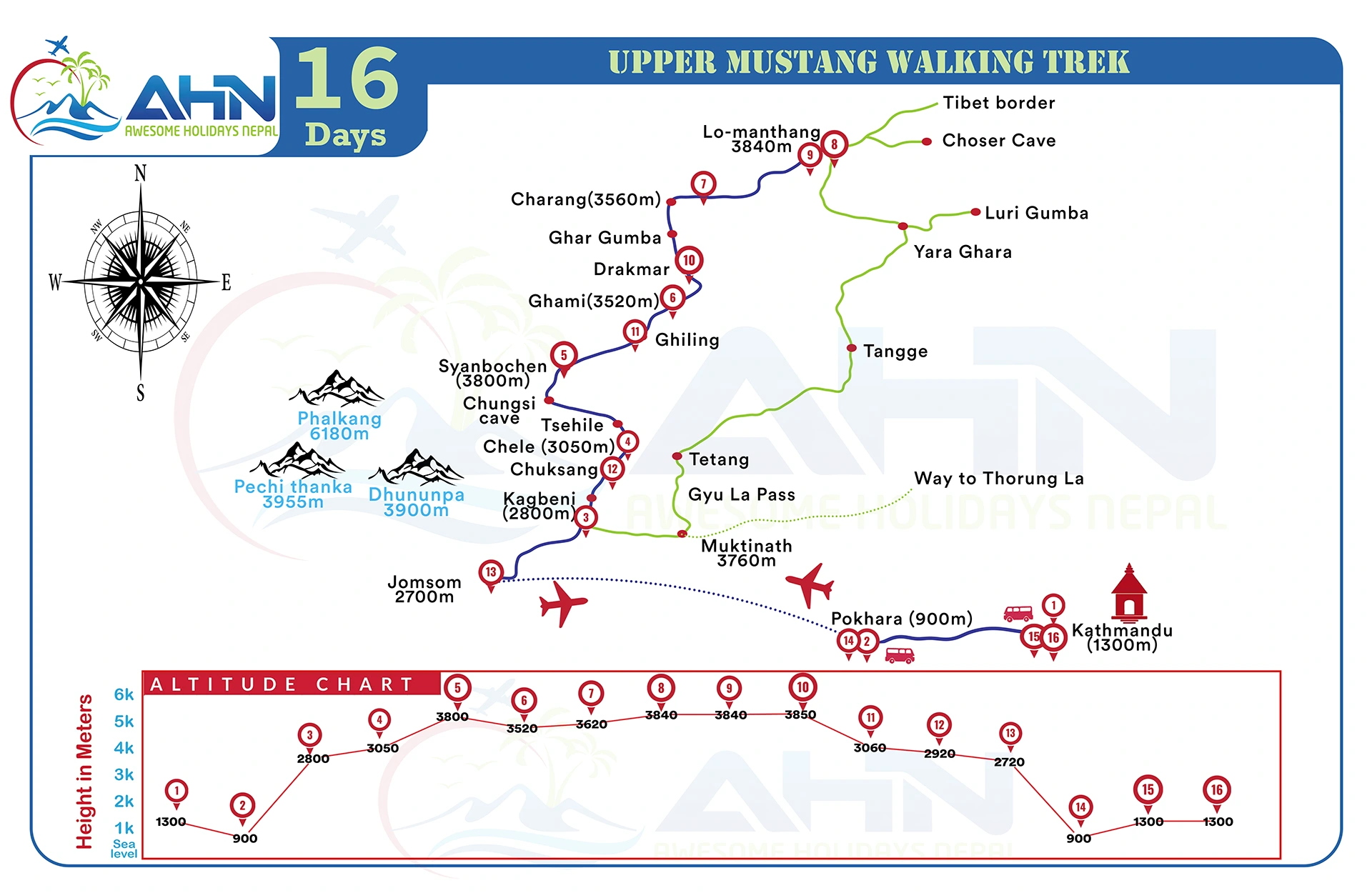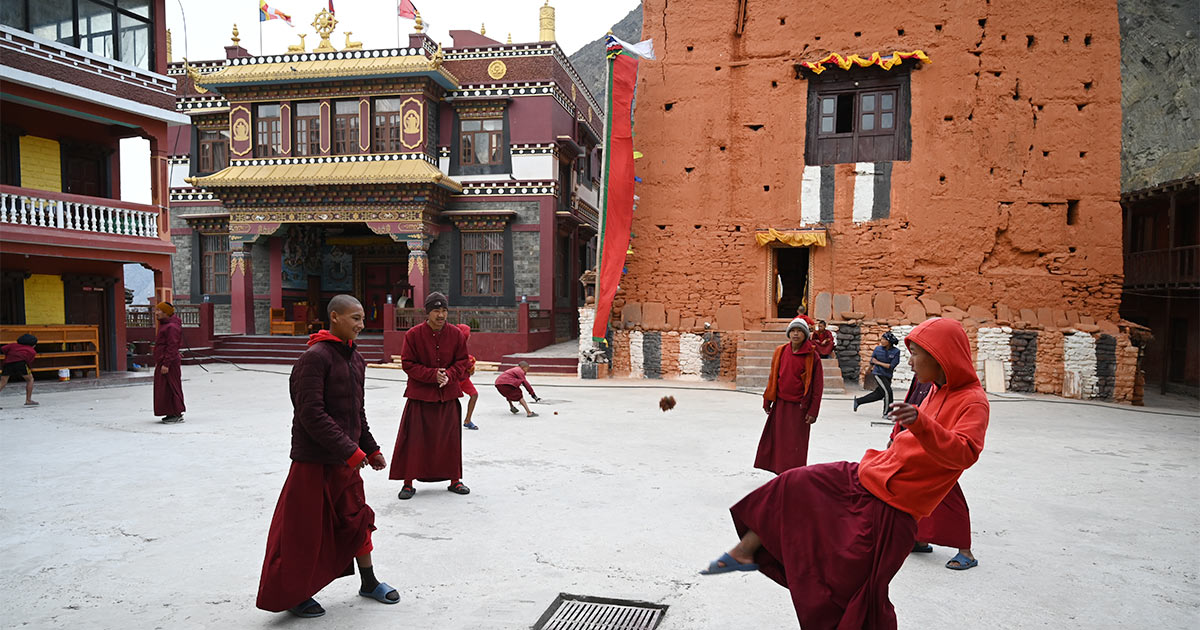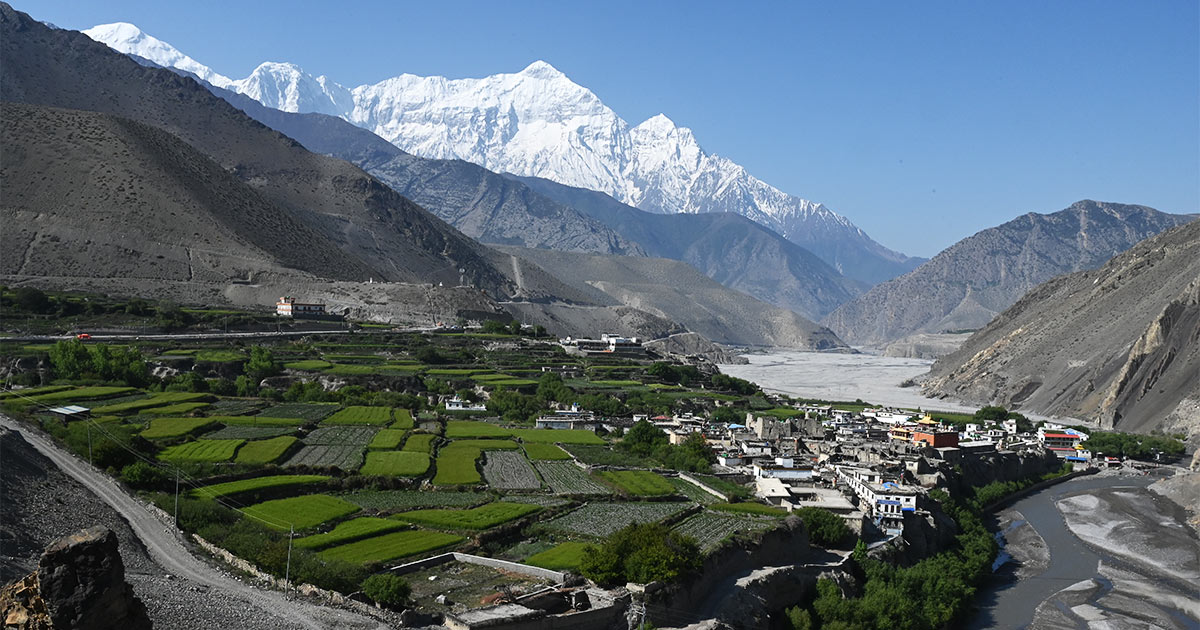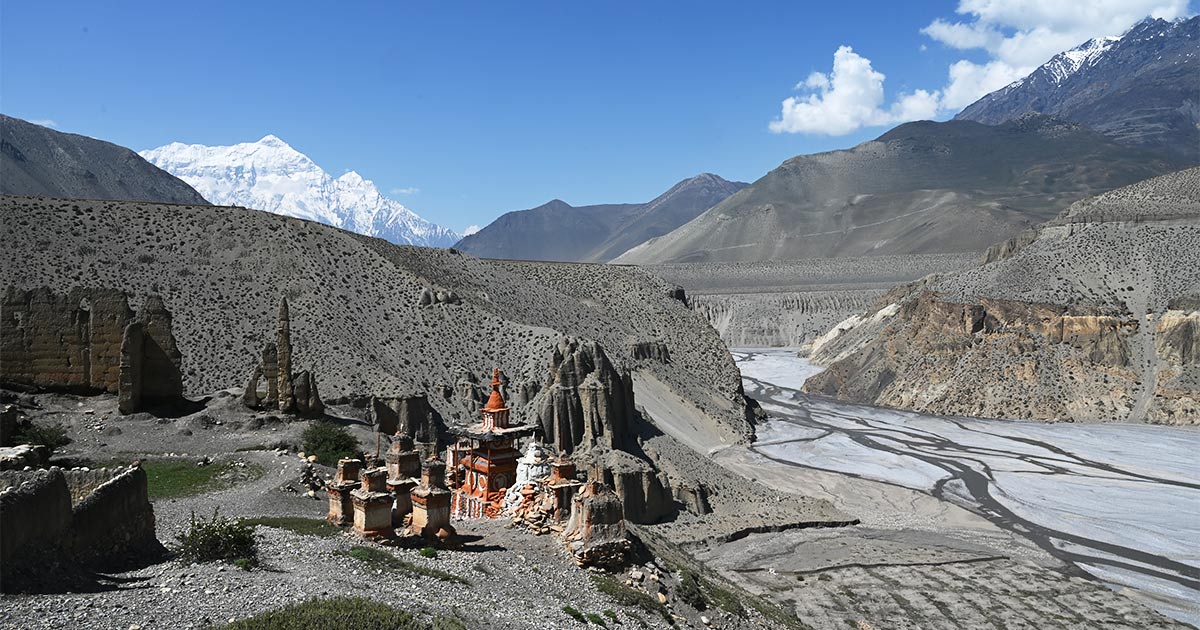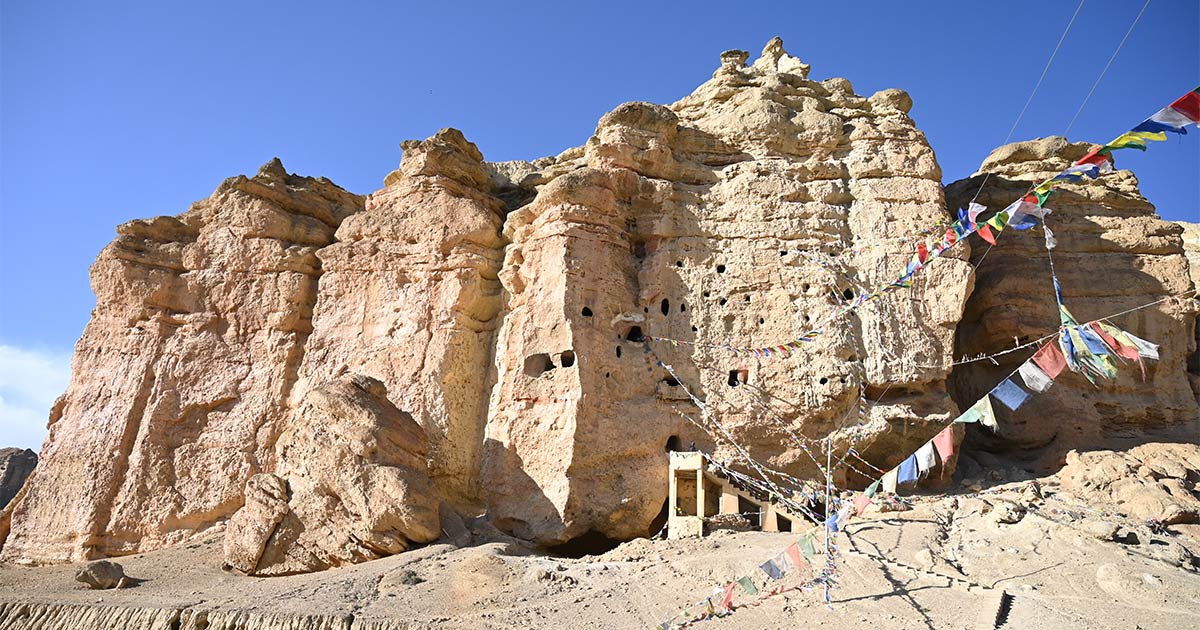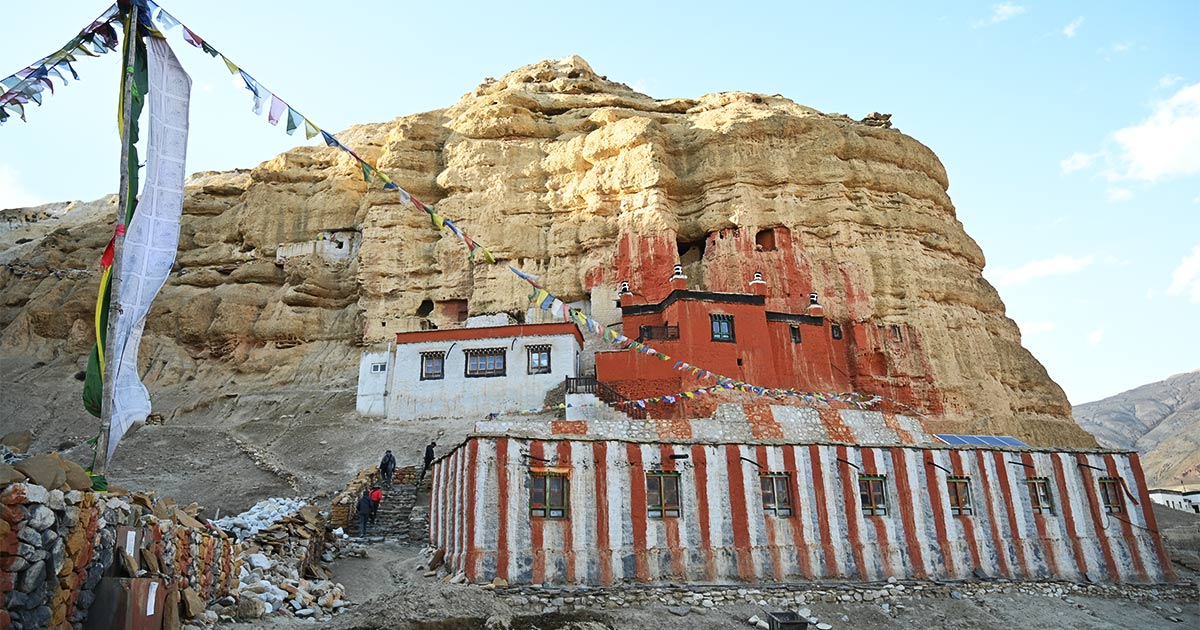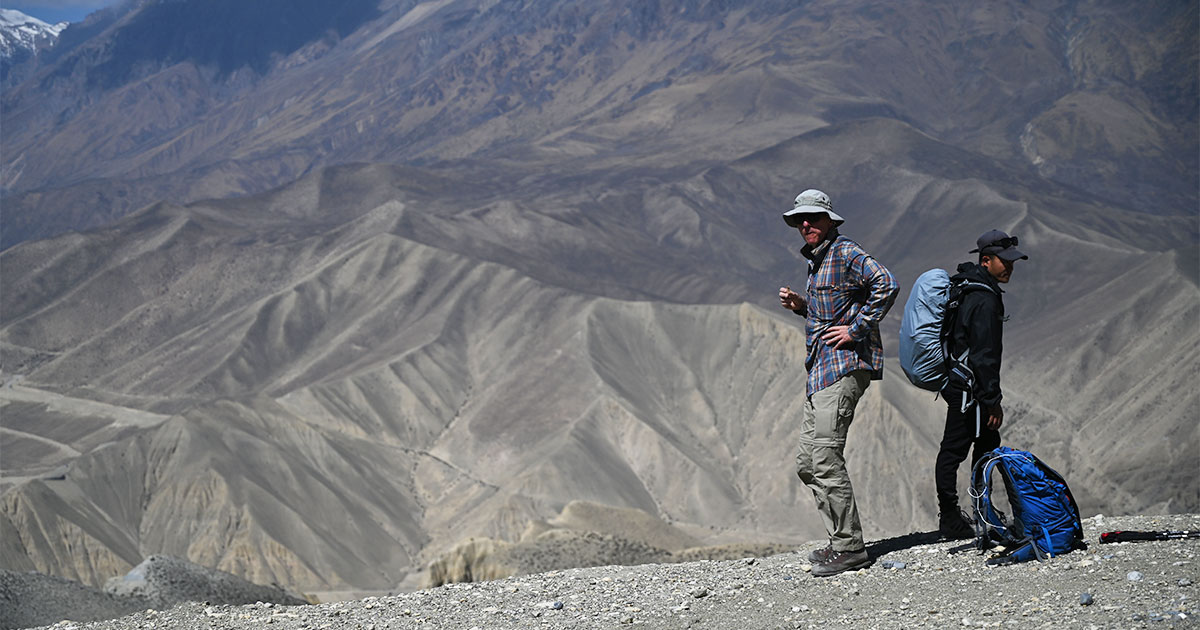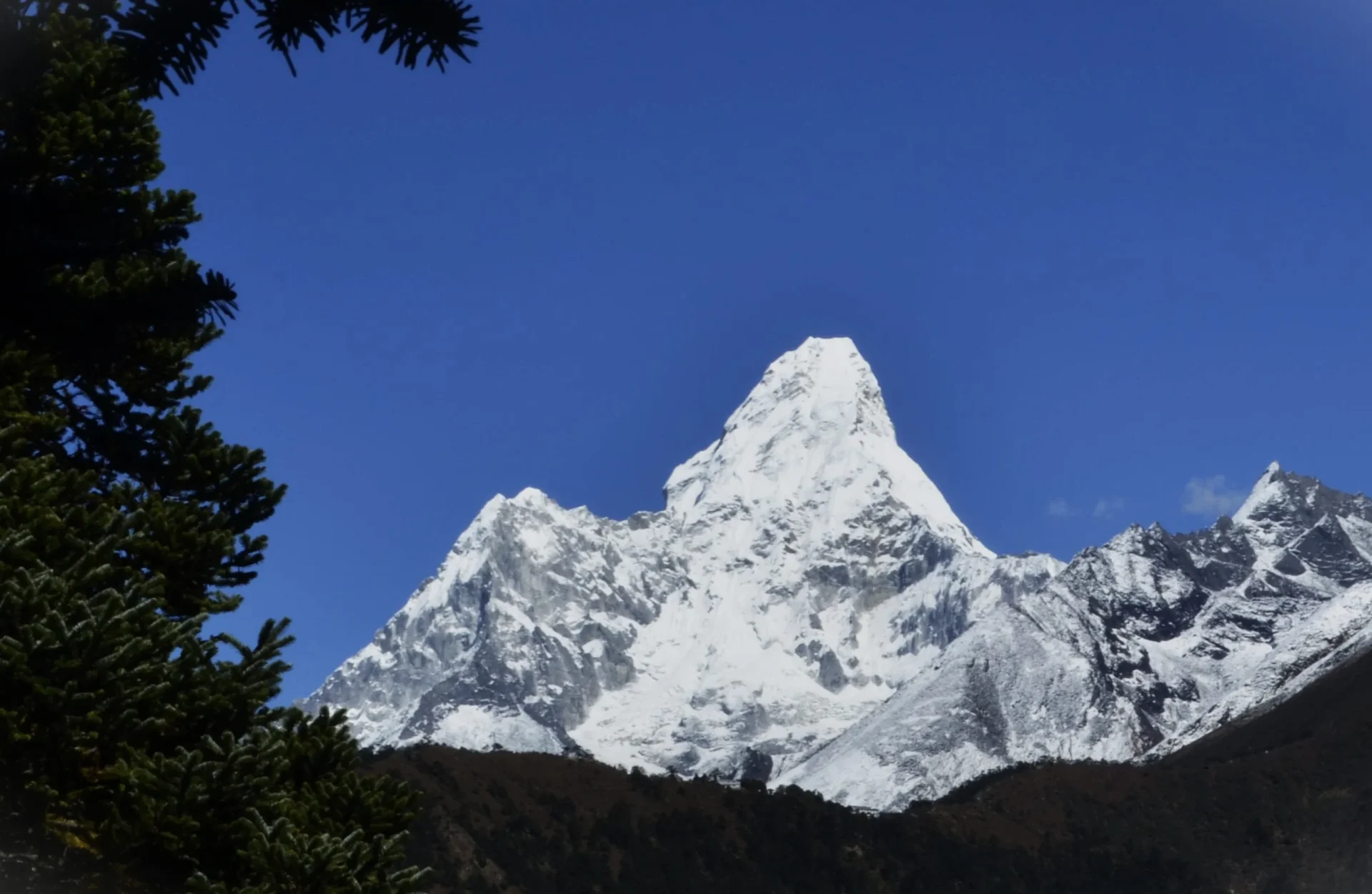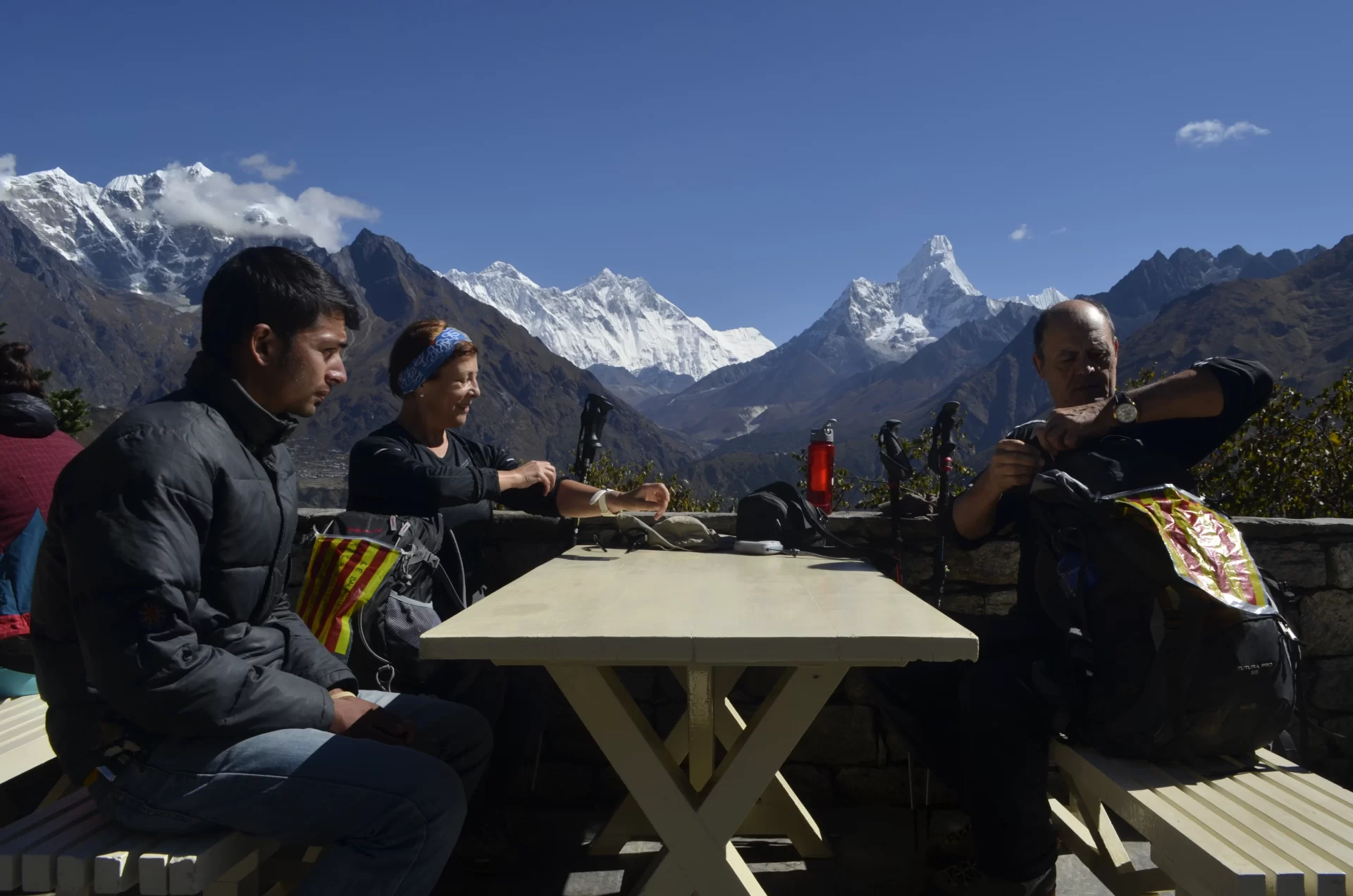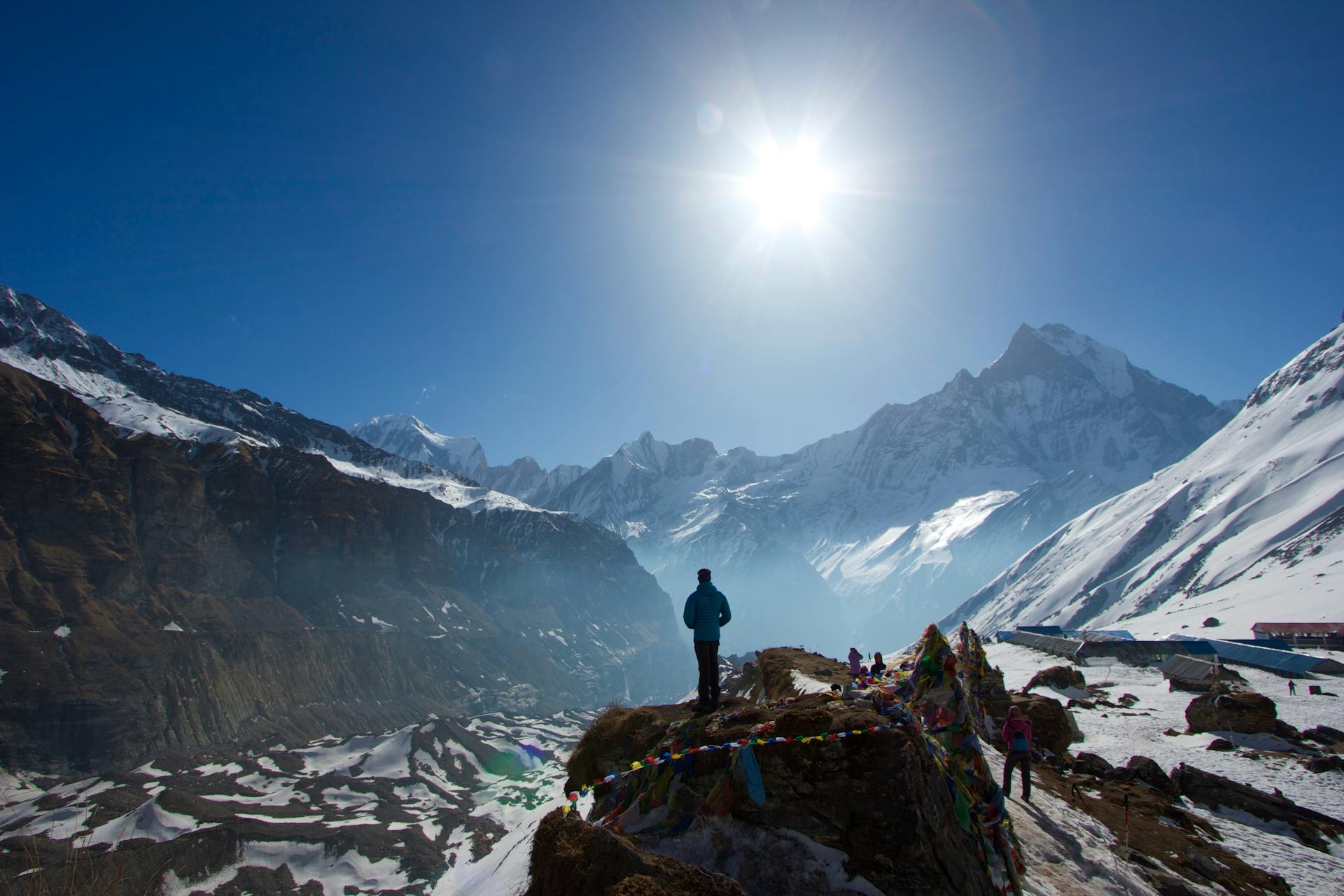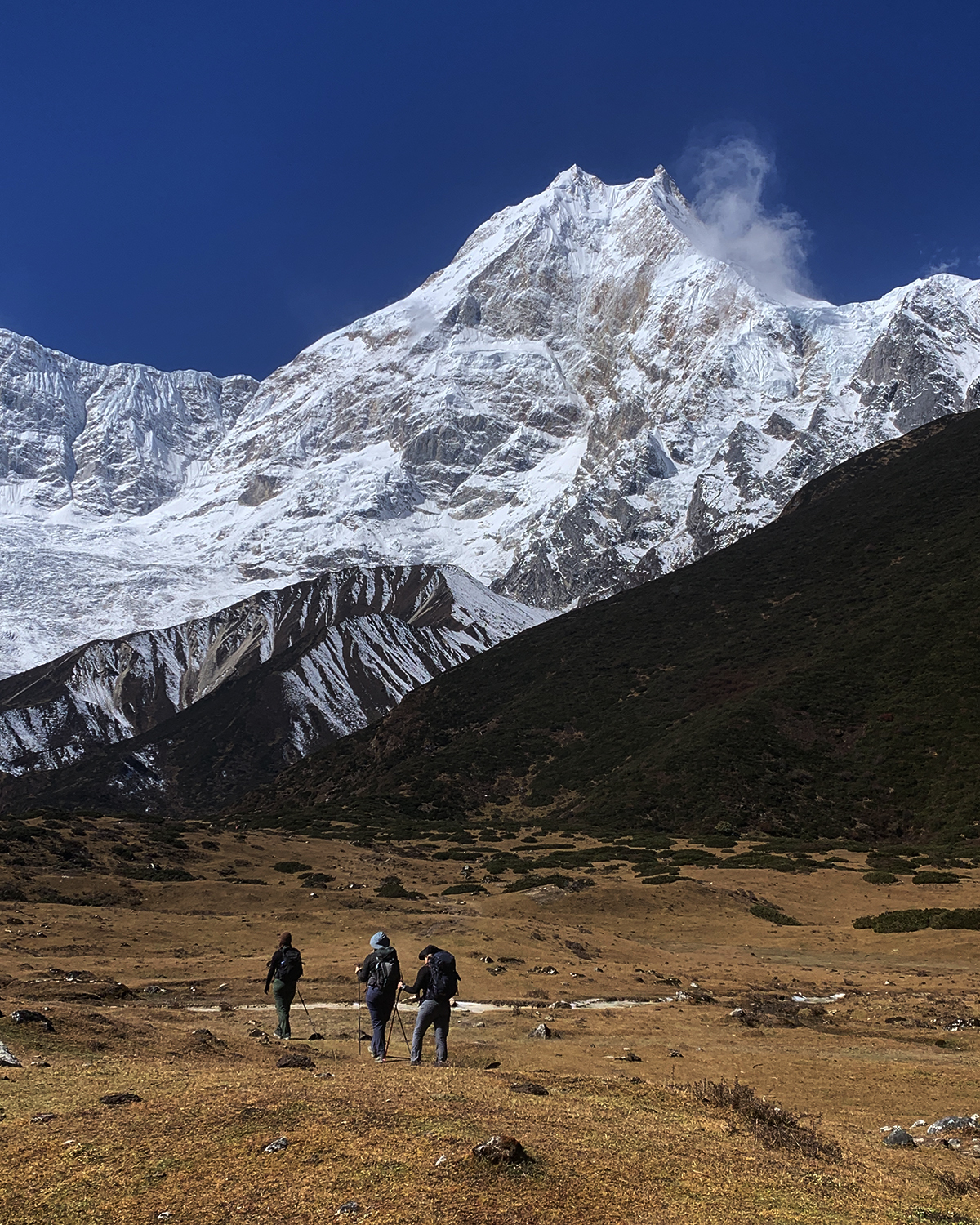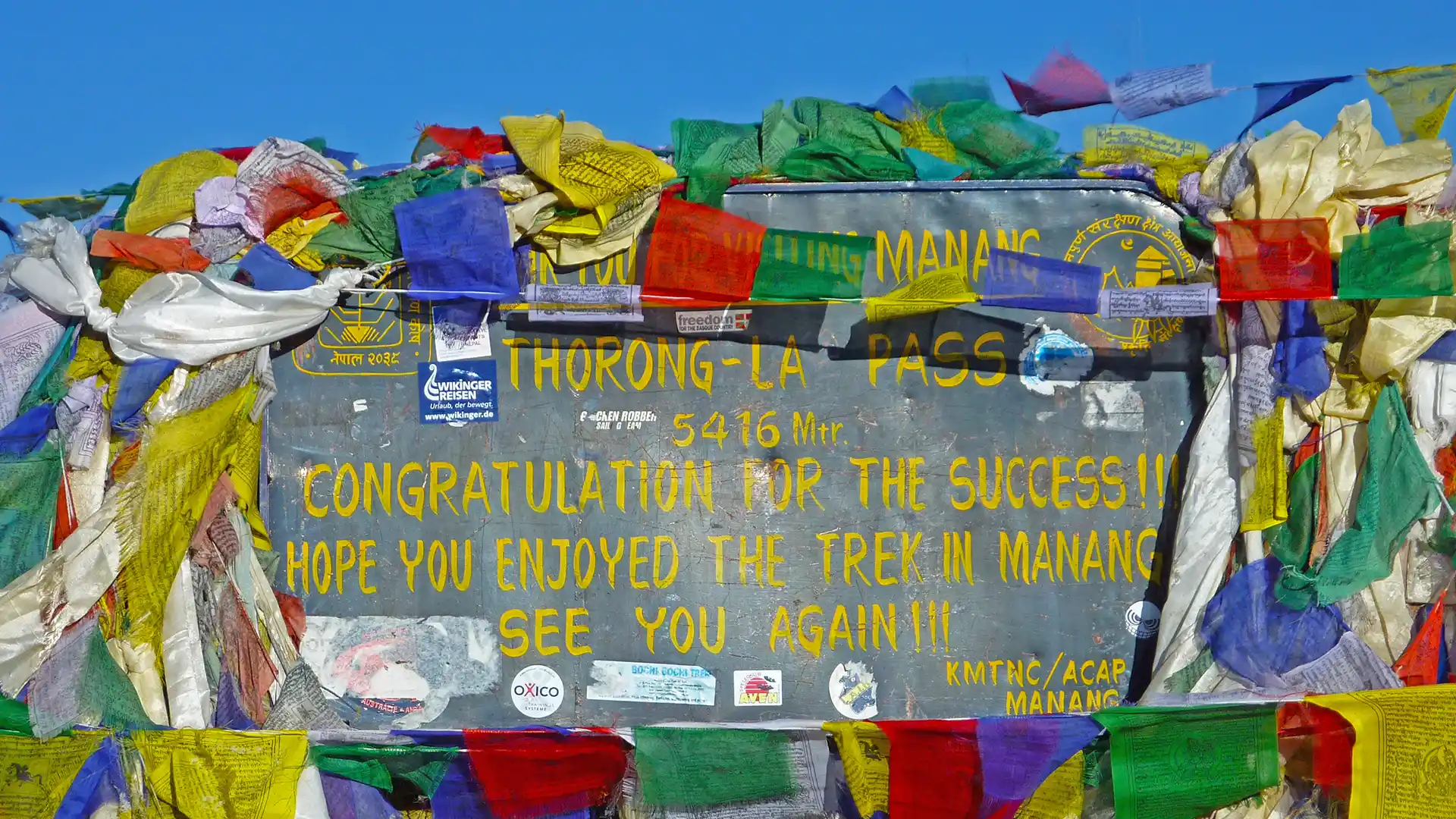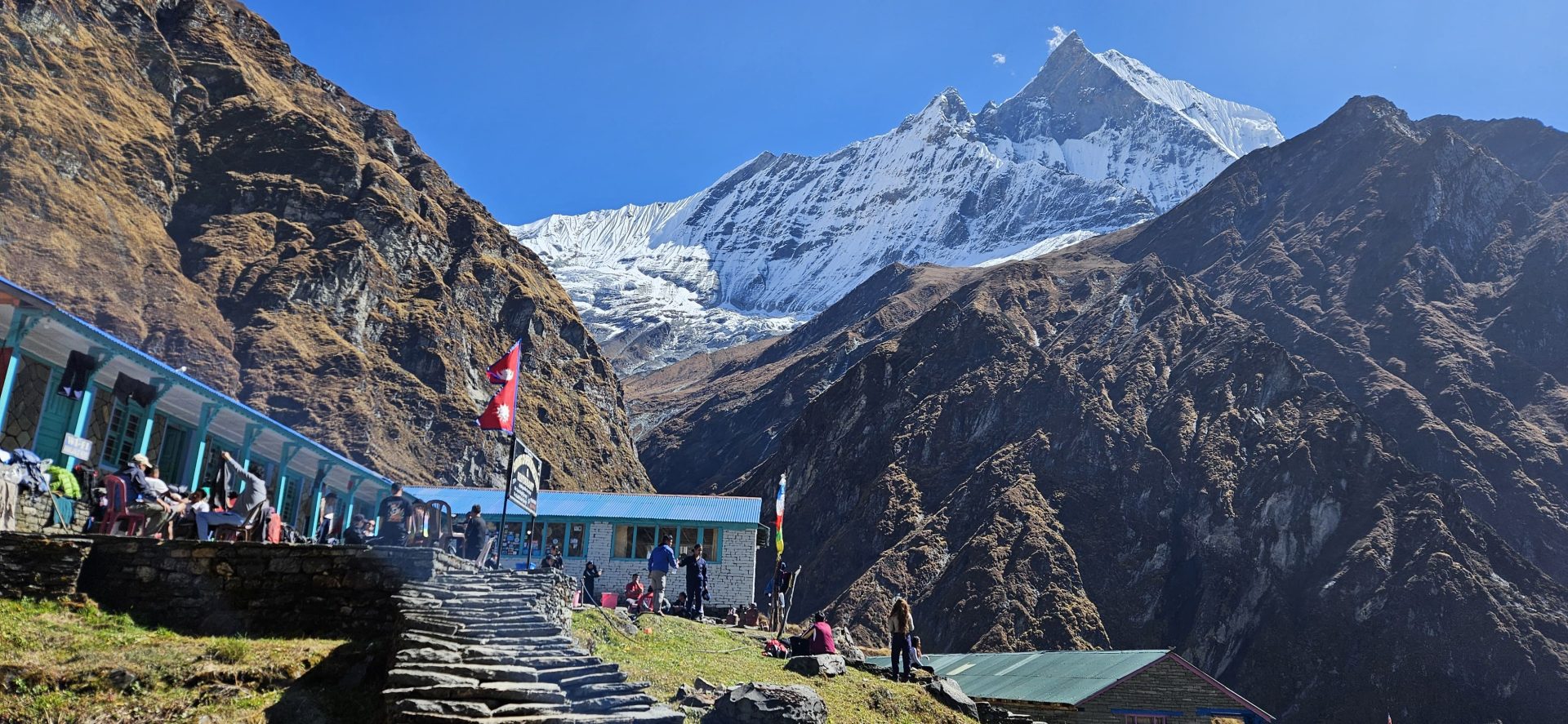The Upper Mustang Trek is a 16-day journey through the ancient and culturally rich region of Upper Mustang, once an isolated kingdom in Nepal. Starting in Kathmandu, this trek takes you through the arid and dramatic landscapes of Mustang, characterized by deep gorges, towering cliffs, and the windswept Kali Gandaki Valley. The trek offers an […]
Upper Mustang Trek overview
The Upper Mustang Trek is a 16-day journey through the ancient and culturally rich region of Upper Mustang, once an isolated kingdom in Nepal. Starting in Kathmandu, this trek takes you through the arid and dramatic landscapes of Mustang, characterized by deep gorges, towering cliffs, and the windswept Kali Gandaki Valley. The trek offers an immersive experience in traditional Tibetan culture, with visits to medieval villages, ancient monasteries, and the walled city of Lo-Manthang. Highlights include exploring the Chhoser Caves, crossing high mountain passes, and visiting the sacred temples and palaces of this remote region. The trek provides a rare glimpse into a world where time seems to have stood still, offering both adventure and deep cultural insights.
Upper Mustang Trek highlights
- Exploration of Lo-Manthang: The ancient walled city, once the capital of the Kingdom of Mustang, known for its royal palaces, monasteries, and rich cultural heritage.
- Visit to Chhoser Caves: A network of ancient caves that were historically used for meditation and shelter by the local people.
- Crossing High Mountain Passes: Trekking across the Yamda La and Nyi La Passes, offering panoramic views of the Mustang region and surrounding Himalayas.
- Cultural Immersion in Traditional Villages: Experience the traditional Tibetan-influenced culture in villages like Kagbeni, Chele, and Ghami, where ancient traditions are still practiced.
- Stunning Arid Landscapes: Trek through the unique landscapes of Upper Mustang, including red cliffs, deep gorges, and the vast expanse of the Kali Gandaki Valley.
- Spiritual and Historical Sites: Visit ancient monasteries, chortens, and the palace in Tsarang, gaining insights into the spiritual and historical significance of the region.
Upper Mustang Trek Itinerary
Expand AllArrival in Kathmandu
Upon arrival at Tribhuvan International Airport in Kathmandu, you will be warmly welcomed and transferred to your hotel. The rest of the day is free to explore the vibrant streets of Kathmandu or rest after your journey. In the evening, we’ll have a welcome dinner where you can enjoy traditional Nepali cuisine and get a briefing about the Upper Mustang Walking Trek. This is your chance to prepare and get excited for the adventure ahead.
Full day sightseeing and permit preparation day
Your morning in Kathmandu will begin with a private city sightseeing guided by a professional tour guide. The tour covers the four main attractions of the city beginning with Kathmandu Durbar Square where you will learn the history of Nepal while enjoying the intricate architecture of palace buildings and the two-tiered pagoda-style temples. After a short lunch break, the tour will take you to Swayambhunath Stupa, also called Monkey Temple, and Boudhanath Stupa, one of the biggest stupas in Asia. Following up, you will also visit Pashupatinath, the most popular Hindu temple. An evening in the Pashupatinath area with an arati is a diving sight to many.
Kathmandu to Pokhara
After breakfast, we’ll take a luxury bus from Kathmandu to Pokhara, a beautiful city known for its serene lakes and breathtaking views of the Annapurna and Dhaulagiri ranges. Upon arrival, you’ll have the evening to explore Pokhara, enjoying dinner on the peaceful lakeside.
Fly from Pokhara to Jomsom, Trek to Kagbeni
We begin our adventure with an early morning flight to Jomsom, the gateway to Upper Mustang. The flight offers stunning aerial views of the Annapurna and Dhaulagiri ranges. Upon arrival in Jomsom, we start trekking towards Kagbeni, a charming village that serves as the gateway to the restricted region of Upper Mustang. The trek takes us through the windswept Kali Gandaki Valley, with its unique landscapes and Tibetan-influenced culture.
Kagbeni to Chele
After obtaining our special permits, we trek from Kagbeni to Chele, marking the beginning of our journey into the restricted region of Upper Mustang. The trail takes us through narrow alleyways, ancient villages, and arid landscapes that resemble the Tibetan plateau. As we climb higher, we pass by caves and monasteries, getting a glimpse of the unique culture and traditions of the region. We reach Chele by late afternoon, where we’ll stay overnight.
Chele to Syanbochen
Today’s trek involves crossing the Yamda La Pass at 3,850 meters, offering panoramic views of the Mustang region. The trail winds through deep gorges and past ancient chortens (Buddhist shrines), with spectacular views of the surrounding mountains. We continue trekking through small villages, where we can observe the traditional way of life of the local people. By evening, we reach Syanbochen, a small settlement surrounded by stunning landscapes.
Syanbochen to Ghami
After breakfast, we begin our trek towards Ghami, crossing the Nyi La Pass at 4,010 meters. The pass offers breathtaking views of the surrounding peaks and the vast Mustang Valley below. As we descend from the pass, we enter the village of Ghami, known for its whitewashed houses and extensive barley fields. Ghami is one of the largest villages in Upper Mustang and has a rich history and culture, making it an interesting place to explore.
Ghami to Tsarang
Today’s trek takes us from Ghami to Tsarang, passing by the longest Mani wall (a wall of inscribed stones) in Nepal. The trail offers stunning views of the arid landscapes and the red cliffs that characterize the region. Tsarang is an important cultural hub in Upper Mustang, home to a large monastery and an ancient palace. We’ll have the opportunity to explore these historical sites and learn more about the region’s rich heritage.
Tsarang to Lo-Manthang
We continue our journey towards Lo-Manthang, the capital of the former Kingdom of Mustang. The trek offers spectacular views of the Himalayas and the unique landscapes of the Mustang region. Lo-Manthang is a fascinating walled city, known for its ancient monasteries, royal palaces, and Tibetan-style houses. Upon arrival, we’ll explore the city and immerse ourselves in the rich culture and history of this remote and ancient kingdom.
Exploration Day in Lo-Manthang
We spend the day exploring Lo-Manthang and its surroundings. We’ll visit the Chhoser Cave, a series of ancient cave dwellings that were once used for meditation and as shelters. The day also includes visits to the many monasteries and palaces within Lo-Manthang, each with its unique architecture and spiritual significance. This day is a deep dive into the culture and history of Upper Mustang, offering a truly immersive experience.
Lo-Manthang to Drakmar/Dhakmar
After exploring Lo-Manthang, we begin our trek back, heading towards Drakmar/Dhakmar. The trail takes us through the red cliffs that are characteristic of this region, with ancient caves dotted along the way. The landscapes are both rugged and beautiful, offering stunning views of the surrounding mountains. Drakmar is a small village with a rich history, where we’ll stay overnight.
Drakmar to Ghiling
Today, we trek from Drakmar to Ghiling, passing through arid landscapes and small villages. The trail offers a mix of cultural and natural beauty, with opportunities to visit local monasteries and interact with the local people. Ghiling is a peaceful village with a serene atmosphere, perfect for a night’s rest after a long day of trekking.
Ghiling to Chhuksang
We continue our descent from Ghiling to Chhuksang, following the trail through the heart of Mustang. The landscapes are breathtaking, with views of the Kali Gandaki Valley and the surrounding peaks. Chhuksang is a traditional village with a mix of Tibetan and Nepali culture, offering us a final taste of the unique heritage of Upper Mustang before we head back to the more populated areas.
Chhuksang to Jomsom
On our final day of trekking, we make our way back to Jomsom, retracing our steps through the Kali Gandaki Valley. The return journey offers a chance to reflect on the incredible experiences of the past days, as we take in the stunning landscapes one last time. Upon arrival in Jomsom, we’ll celebrate the successful completion of our trek.
Fly from Jomsom to Pokhara
We take an early morning flight from Jomsom to Pokhara, enjoying the scenic views of the Himalayas from the air. Once in Pokhara, the rest of the day is free to explore the city or relax by the lakeside. Pokhara offers a perfect contrast to the arid landscapes of Mustang, with its lush greenery and tranquil atmosphere.
Fly from Pokhara to Kathmandu
Enjoy the morning with a breakfast in the hotel. Later in the afternoon, we will fly back to Kathmandu, where we have the evening to explore more of the city’s cultural and historical landmarks if the time allows. This is our last chance to immerse ourselves in the rich heritage of Nepal before our departure.
Departure day
Depending on your flight schedule, you may have some time for last-minute shopping or sightseeing in Kathmandu. Our representative will transfer you to the airport for your departure, marking the end of your unforgettable journey through Kathmandu and Nagarkot.
Upper Mustang Trek Cost Includes
- Airport pickup and drop off (both domestic and international)
- Welcome/Farewell dinner at Kathmandu.
- 3 nights hotel accommodation in Kathmandu with Breakfast (3 star hotel)
- 2 nights hotel accommodation in Pokhara with Breakfast (3 star hotel)
- Stay at teahouses/ guesthouses on the trek on a twin-sharing basis (single room available with an extra charge)
- Standard meals during the trek that includes Breakfast, Lunch, and Dinner.
- Full day sightseeing in Kathmandu by private vehicle
- Local English-speaking guide throughout the trek
- Porters to carry your duffel bag. 2:1 ratio for Guest to porter.
- Food, Salary, Insurance and accommodation for Guides, Porters and all the local crew member.
- Duffel bag and Down jackets from the company (if needed)
- Purifies drinking water during the trek using a water purifier or chemical purifying tablets.
- All necessary permits for the Upper Mustang trek.
- First-aid treatment in case of any emergencies.
- Kathmandu-Pokhara by luxury tourist bus
- Pokhara-Kathmandu by flight
- Pokhara-Jomsom-Pokhara by flight
- All administrative expenses and government taxes.
Upper Mustang Trek Cost Excludes
- Meals in Kathmandu except for the welcome/farewell dinner.
- International flight fares and airport departure tax.
- Bottled water or any kind of beverage.
- Tourist visa for entry in Nepal.
- Travel insurance and the emergency evacuation service charges.
- Tipping and gratuities for guides and porters
- Personal expenses including personal gear or equipment.
Upper Mustang Trek date and time
| Dates | Price | Availability |
|---|---|---|
|
Select Date:
Please select the date |
US$ 1820 |
Trip Video
Packing List for Upper Mustang Trek
The key is to prioritize lightweight, durable, and versatile gear. It's important to test and familiarize yourself with your equipment before embarking on a trek. If you find a particular brand that meets your criteria for quality, that's great, but always prioritize functionality and reliability.
Important: Travel Documents
- Passport (at least 6 months of validity)
- Travel Insurance
- Passport-size photos
- Debit/Credit Cards
- Emergency Contact Details
- Some Cash
General
- Sleeping bags (zero degrees)
- Backpack with rain cover (recommended size about 35-45 liters)
- Sleeping bag liner
- Duffel Bag (can be rented)
Basic Clothing
- Warmers and technical fabric base layer
- Comfortable pants
- Sleeping wear/night suits
- Undergarments & sports bra
Warm Clothes
- Body warmer tops and pants
- Fleece jacket/pullovers
- Warm pants
- Wool or technical fabric
- Hard-shell outer gloves
- Warm caps/Knitted hats
Feet protection
- Hiking socks
- Liner socks
- Wool or
- Casual shoes
- A pair of slippers
- Ice cleats/Microspikes (for trekking on wet surfaces, specifically from November to March)
- Gaiters (for winter treks)
Snow/Rain Protection
- Waterproof/Windproof jackets
- Waterproof/Windproof pants
- Hard-shell outer gloves
- Raincoats
Sun Protection
- Caps or Sun hat
- Sunglasses
- Shades (preferably polarized)
- Sunscreen
Trekking Gears
- Hiking poles
- Headlamps
- Technical fabric short and long sleeve shirts
- Technical fabric base layer for lower body
- Hiking pants
- Hiking shorts
Essential Medicine & First-aid
Even though your trekking guide will carry the necessary medications for altitude sickness and first aid kits to help in case of any accidents, you also need to have personal kits. A personal first aid kit needs to have the following elements:
- Cough syrups
- Ointment
- Cough syrup
- Ointments
- Antiseptic creams
- Mosquito repellents
- Electrolyte
Other Necessities
- Toiletry kit
- Passport
- Extra copies of passport-sized photos (required for permits and other docs)
- Reusable water bottle
- UV water purifier or Water purification tables
- Hydration bladder
- Towel
- Pillowcases
- Waterproof bags (for carrying money and necessary documents)
Optional Equipment
- Cameras and mobile phones
- Power banks (preferably solar-charged)
- Binoculars
- Pee funnel and pee bottle
- Whistle
- Thermos bottle for hot drinks and water
- Binoculars
- Cards/books/diaries
Upper Mustang Trek FAQs
Expand AllWhen is the best time to trek to the Upper Mustang Trek?
The best time to trek to the Upper Mustang Region is during the Autumn and Spring seasons, as the climate is favorable and the trekking route is rich in luscious greens. For a safe, memorable, and incredible experience, plan a trek between mid-September and November or March and June.
However, the trek is possible all around the year. As long as you can avoid rainstorms and sustain extreme temperatures, you can ascend during colder months to avoid the crowd.
How long does the Upper Mustang trek take?
The Upper Mustang walking trek usually takes 16 days to complete, but the duration might vary depending on how you customize your trip and the transportation you use.
Do I need to book in advance?
Though it might not be mandatory, booking your Upper Mustang trek in advance is better to ease the process, specifically if you plan for trekking seasons, as mentioned above.
Booking in advance secures your spot and ensures you and your trekking company are well-prepared for the trek. However, getting the trekking permits, booking accommodation and transport, and getting your visas might take time.
What kind of fitness level is required?
Trek to the Upper Mustang requires moderate fitness since you will walk at least 6-7 hours daily. You will also need good cardiovascular endurance and muscular strength to ascend quickly through rough terrain.
If you aren’t somebody who doesn’t perform physical training regularly, it is better to start training at least ¾ months in advance. Ensure you include cardio, flexibility exercises, and strength training in your workout to prepare your body for the trek.
What permits are required?
To explore the Upper Mustang, you require three different permits: a special Mustang trek permit, an Annapurna Conservation Area project permit, and a TIMS card (Travelers Information Management System).
Do I need travel insurance?
Travel insurance isn’t mandatory when trekking in the Upper Mustang region. Still, it is advisable to do so to prepare in advance for possible catastrophic situations on the trek.
Can I customize my itinerary?
Yes, you can customize your itinerary for the Upper Mustang trek to fit your needs. We can add or subtract the acclimatization days, optimize the trekking route, and shorten or elongate the trek as you prefer.
However, if you have booked for our regular trekking package that moves as a group, customizing the itinerary just for an individual isn’t possible.
What is the best way to train for the trek?
Some of the best ways to train for the trek are through regular cardio, focusing on breathing exercises, strength training, lifting weights, hamstring sketching exercises, and so on. You can also switch to climbing stairs instead of lifts, walking, or jogging instead of driving to smaller distances to prepare your body.
Additionally, going on regular hikes or climbing up the hills can be the best way to train for the trek.
What kind of gear do I need?
To trek to the Upper Mustang region, you will need lightweight and warmer clothing, trekking poles, hiking boots, headlamps, sleeping bags, sunglasses, toiletries, and solar batteries.
Do I need vaccinations?
Getting any vaccinations to trek to the Upper Mustang region isn’t mandatory. However, you can check your country’s travel regulations and vaccinate yourself before visiting Nepal.
Typically, routine vaccines are available, including those against Malaria, Japanese Encephalitis, Hepatitis A, Hepatitis B, Typhoid, Rabies, and Cholera.
What currency should I carry?
For any personal expenses other than those offered by the trekking company, you will need Nepalese rupees for your Upper Mustang trek. However, it is better to have some USD or your home currency as a backup for emergencies or returns.
Exchange your currencies for Nepali rupees in Kathmandu to find the best rates.
Do I need a visa for Nepal?
To travel to Nepal, you will need a “Tourist Visa.” This visa is available on arrival for most foreign visitors except those from African countries, Afghanistan, and refugees with travel documents.
Check the official website of the Department of Immigration for information regarding On Arrival and other tourist visas in Nepal.
Is it possible to trek solo?
It is possible to trek solo to the Upper Mustang Region, as the terrain isn’t that difficult to reach.
What is the trek route like?
The trekking route to the Upper Mustang consists of rough rocky terrain, a couple of steep hills, stairs, and narrow trails. Along your path, you will encounter suspension bridges, a biodiversity conservation area, luscious green forests, and locally inhabited villagers.
What kind of accommodation is available?
While standard, three-star, and five-star accommodations are available in Kathmandu, the options might be restricted on the trekking route. You will most likely find tea houses with clean rooms along the route.
And yes, getting private rooms or rooms with attached bathrooms is possible, but you will have to pay an extra charge.
How do I get to the starting point?
If you want to trek through the Upper Mustang region, you can reach the starting point, i.e., Jomsom, via flight or on a jeep ride.
Is there electricity and Wi-Fi available?
Yes, electricity and Wi-Fi are available in most of the teahouses en route to the Langtang region trails. However, it might be costly to access internet services and charge your devices at these stops, and the reliability of the connection could be better, too. You can carry rechargeable solar batteries for electricity.
How much luggage can I carry?
Since you will be traveling on a bust and then hiking along the trekking route, there is no restriction on the luggage you can carry. However, it is better to travel light as you will have to
What is the food like on the trek?
The guesthouses and teahouses primarily serve Nepali, Tibetan, and other ethnic cuisine, including Rice, Pulses, Bread, Noodles, and Soup.
Are there showers available?
Yes, showers are available on the trek to Upper Mustang, but it’s recommended that you avoid showering at higher elevations.
Can I charge my electronics?
There are provisions for charging your electronics in rest houses, teahouses, or local stays. But remember to carry the required adapters (C type and D type) with you to fit in your chargers.
What kind of toilets are available?
The teahouses have clean but fundamental squat toilets en route to Upper Mustang. In case of emergencies, private areas along the trail can also be found to relieve the pressure.
Is it possible to do laundry on the trek?
Yes, doing laundry on the Upper Mustang Trek is possible. However, the water is cold, so we suggest you do not use it unless required. Packing enough clothes is better than looking for laundry in elevations with cold water.
Can I buy snacks and drinks on the trek?
You are less likely to find a store to buy snacks and drinks on the trek as it is a remote area inhabited by fewer people. However, the tea houses along the trail do sell biscuits, candies, and other snacks.
We advise you to carry protein bars, dried nuts, and fruits to snack when you want. For drinking water, you can bring a refillable bottle with a filter to drink water from sprouts or springs along the way.
Are there ATMs along the trail?
Yes, you can find a few ATMS in Jomsom, but none are on the trekking trail.
How do I deal with altitude sickness?
If you get altitude sickness on your way Upper Mustang, let your trekking guide know about the situation. The guides are prepared with first aid required for such a situation.
Rest at the same spot and take anti-sickness medications. After you feel a little better, descend to a lower altitude. If the situation worsens, request the guide reach out to the head office in Kathmandu for a helicopter rescue.
What should I pack for the trek?
It would be best to pack warmer clothes, trekking gear, all your necessary medications, and travel documents for the trek. Additionally, you should pack protein bars, dry nuts, and fruits for snacking on the trek, along with a refillable water bottle.
Even though the company will provide you with packaged water bottles along the journey, it is convenient to carry your own.
Are there medical facilities along the way?
Medical facilities are very limited on the trekking routes of the Upper Mustang except in towns like Jomsom. We suggest you carry all necessary medications in your backpack before you drive to the base.
Is it safe to drink the water?
Water from natural sources looks clean in the Langtang region, but it might not be safe to drink. You can purify the water using bottle filters, chlorinate it, or boil it to make it potable.
What should I do in case of an emergency?
The first thing you can do in an emergency is contact our trekking guide. Our guides are equipped with oximeters and necessary first-aid kits and trained to handle any kind of emergency.
Besides, the guides will have all the necessary contacts to contact emergency rescue services such as helicopter rescue, air ambulance, or land rescue.
How can I prevent altitude sickness?
The best way to prevent altitude sickness is by taking proper rest after your trek, acclimatizing to the altitude, staying hydrated, and avoiding alcohol while on the trek.
What should I do if I experience altitude sickness?
Whenever you feel sick due to altitude, stop immediately and rest for a while. Hydrate yourself and take medications to ease the pain.
You should never try to ascend or descend right away whenever you are experiencing altitude sickness. Let your trekking guide know about your situation and request an emergency rescue if the condition worsens.
What medications can help with altitude sickness?
Acetazolamide (usually sold under the name Diamox) can help you with altitude sickness. As it reduces the severity of any observed symptoms as well as helps you adjust to high altitude quicker, Diamox is often suggested to treat acute altitude sickness.
Some other medications that can also help are Dexamethasone, Nifedipine, and Ibuprofen. It is safe to consult your physician and take the medications in advance to prevent allergies or any undesired reaction against the drugs.
What other health concerns should I be aware of?
You should be aware of any medical conditions that you might have before planning the trek. If you have pulmonary diseases, asthma, or any other breathing-related illness, it’s better to get it checked and prepared in advance with medication and stimulatory exercises.
Additionally, you should be aware of any allergies that you might have before you trek. It is always best to avoid food, drinks, or agents that can instigate a hypersensitive reaction in your body to prevent any illness on the route.
Is it safe to trek alone?
It isn’t too safe to trek alone in the wilderness. If you are planning to trek to high-altitude mountains like the Upper Mustang region, which can often have unpredictable weather, is prone to natural calamities, and involves risky and rough terrains, it isn’t safe to travel solo.
If you know the route very well and are mentally and physically prepared to trek alone, go for it. Otherwise, it is recommended to take along a travel guide who knows the route well to have a smooth trekking experience.
What should I do if I get injured?
If you get injured during the trek, stop for a break and take the necessary first aid. If you have a serious injury that needs immediate attention, call for emergency rescue with the help of your trekking guide.
Are there any dangerous animals on the trek?
Since the trekking route takes you through conservation areas, it is obvious to see animals on the route. Although it is less likely to find a dangerous animal on the trail, it isn’t impossible. Leopards, cheetahs, musk deer, etc., can often inhabit mountainous regions.
Traveling in groups in such forest areas is better than encountering one. But if you do, don’t just run or instigate the animal; let it pass before you move.
What is the weather like on the trek?
The weather can be unpredictable if you are trekking in a mountainous region. Usually, the temperature is lower and can drop to freezing at night.
Besides, the higher elevation areas often have snow storms, soft rains, and chilled breezes.
Upper Mustang Trek Reviews
Login to ReviewWhat makes this trip different ?
 Environment-Friendly Initiative
Environment-Friendly Initiative
- Awesome Holidays Nepal believes in contributing to the wellness of the environment while promoting adventure and tourist destinations in Nepal.
- For every visitor who books a trip or trek with us, we plant a fruit tree in barren lands in collaboration with community forests.
 Giving Back to the Community
Giving Back to the Community
- Awesome Holidays believes that the native residents know any destination better than an outsider. Thus, the guides, porters, and travel companions who will serve you through the trek or tours are local residents of that particular region.
- As a part of our communal service, Awesome Holidays is also contributing to the welfare of street dogs by feeding them every week.
Similar trips
Experience the difference with our trek experts guiding you through the most challenging trekking routes of Nepal's most famous mountain base camps. We believe in making every journey awesome for you!
